
Spain is a land of many regions and cultures, which makes it an extremely interesting place to visit. It also makes for a big variety of classic cuisine to try while traveling around the country.
While we have not nearly been to every corner of Spain, throughout our several visits we have certainly tried to sample as much of the local dishes as we possibly could.
So let’s take a look at some of what we found while travelling in Spain.
Madrid
The country’s capital and largest city is definitely a good place to start. There are any number of sights to see, but be sure not to miss the Palacio de Cibeles, Madrid’s ornate city hall in Cibeles Square, or the Royal Palace, El Palacio Real, which is one of the largest Royal residences in all of Europe.
As we walked around town we soon found that Madrid is a city of many plazas. Puerta del Sol seems to serve as the heart of the city, in fact it is where the mile markers begin for all of the roads across the entire country. It is also known for a statue of a bear and madrono tree, which has been a symbol of Madrid for centuries.
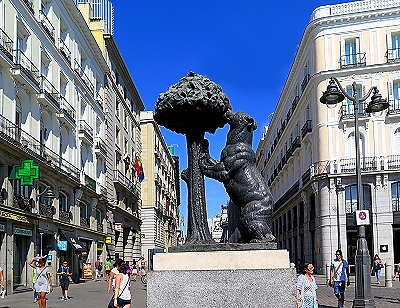
As cool as that is, Plaza Mayor is more popular, and the Plaza de la Villa is more historic. So they are all worth a visit, or any of the many other plazas and squares around town.
Food is also a big part of any visit to Madrid. Of course we tried multiple tapas, it seemed like every time we stopped. These typically Spanish snacks included Iberian ham, fish, crab, salmon, cheese, and some of the best olives we have ever had.
For a full meal we made sure to try Sobrino de Botín for a lunch like Ernest Hemingway would have had. The restaurant is mentioned in The Sun Also Rises, and is certified by the Guinness World Records Book of as the oldest continually operating restaurant in the world, serving since 1725.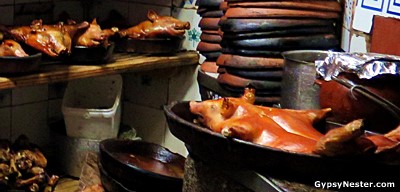
Their signature dish, cochinillo asado, is roast suckling pig. And yes, this is what Papa Hemingway ate and wrote about. We had to agree, this was historically good.
Barcelona
As the premiere city of Catalonia, Barcelona has a unique culture and even its own language. Speaking of unique, it is also home to some of the most interesting architectural designs anywhere on earth.

Much of this is thanks to the incredible architect Antoni Gaudí.
His works are visible all around the city, but without a doubt his absolute masterpiece is the amazing basilica Sagrada Família.
We could never do it justice describing it, so let’s just say you must see it to believe it.
Barcelona is another tapas town, maybe the best we found, but then that is almost impossible to decide. Still, we felt we should try, so we tried everything we could find.
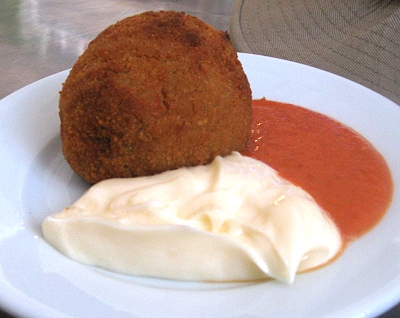
Beginning with the usual stuff, we soon moved on to calamari, chorizo al vino, mussels, and blood sausage.
We even found a bomba which, as the name implies, is a type of gut bomb consisting of mashed potatoes and meat.
Here’s a hint, you can find almost all of the tasty treats in one place at the Boqueria. This covered market has served as Barcelona’s main market ever since 1217, when an open-air meat market sprang up near the city gate.
But since we can’t just drop by Barcelona any time we want some incredible Spanish delicacies, it is good to know that we can find most all of it at Deliart gourmet food.
Basque Country
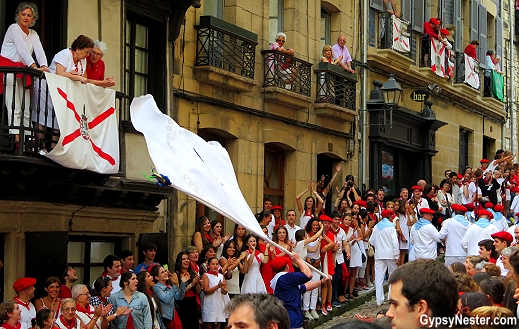
The Basque people have a history that predates even the Romans. Sharing space in both France and Spain, their language has no relation to either of them. Most theories speculate that they arrived over two thousand years ago, and ever since have managed to coexist with their European neighbors.
And in at least one way, the love of tapas, that they have fully integrated into Spanish culture. They are so taken with tapas that they have come up with their own name for them, pintxos. The “tx” has the “ch” sound in the Basque language.
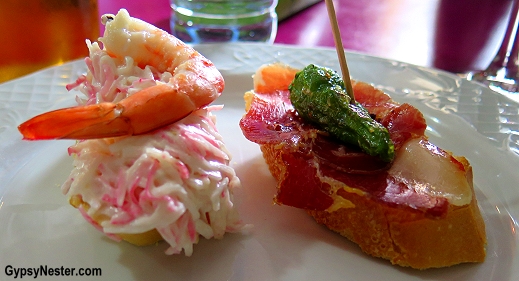
The snacks are usually made with small slices of bread topped with delicious ingredients. A toothpick holds things together, which is where the name comes from, “pincho”, meaning spike.
This is also where we discovered Padrón peppers. These little peppers, fried in olive oil and seasoned with coarse salt, are from the Padrón region in northwestern Spain, but have become popular all over the country. It’s no wonder, because they are one of the best bites we have ever popped into our mouths.
Valencia
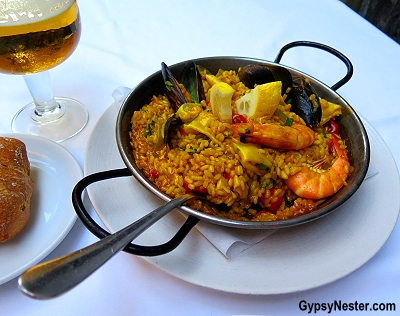
We couldn’t possibly talk about Spanish food without mentioning Paella. It has become basically the national dish in Spain, but originally comes from Valencia. The name paella is taken from the word for the traditional frying pan used to cook the dish over an open fire.
While we have not been to Valencia, we did learn that the traditional Paella valenciana version is made with green beans and lima beans, along with chicken, rabbit, or sometimes duck.
However, the Paella de marisco variety, which is what we think of when we think paella, is based on seafood in place of the other meats. It has become widely popular across all of Spain, as well as the rest of the world.
Perhaps we need to make another trip to Spain so we can see Valencia, and try paella in its home town.
And while we are there we can check out so much more of Spain that we have yet to explore, eat, and enjoy!
David & Veronica, GypsyNester.com


